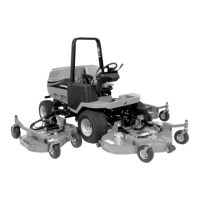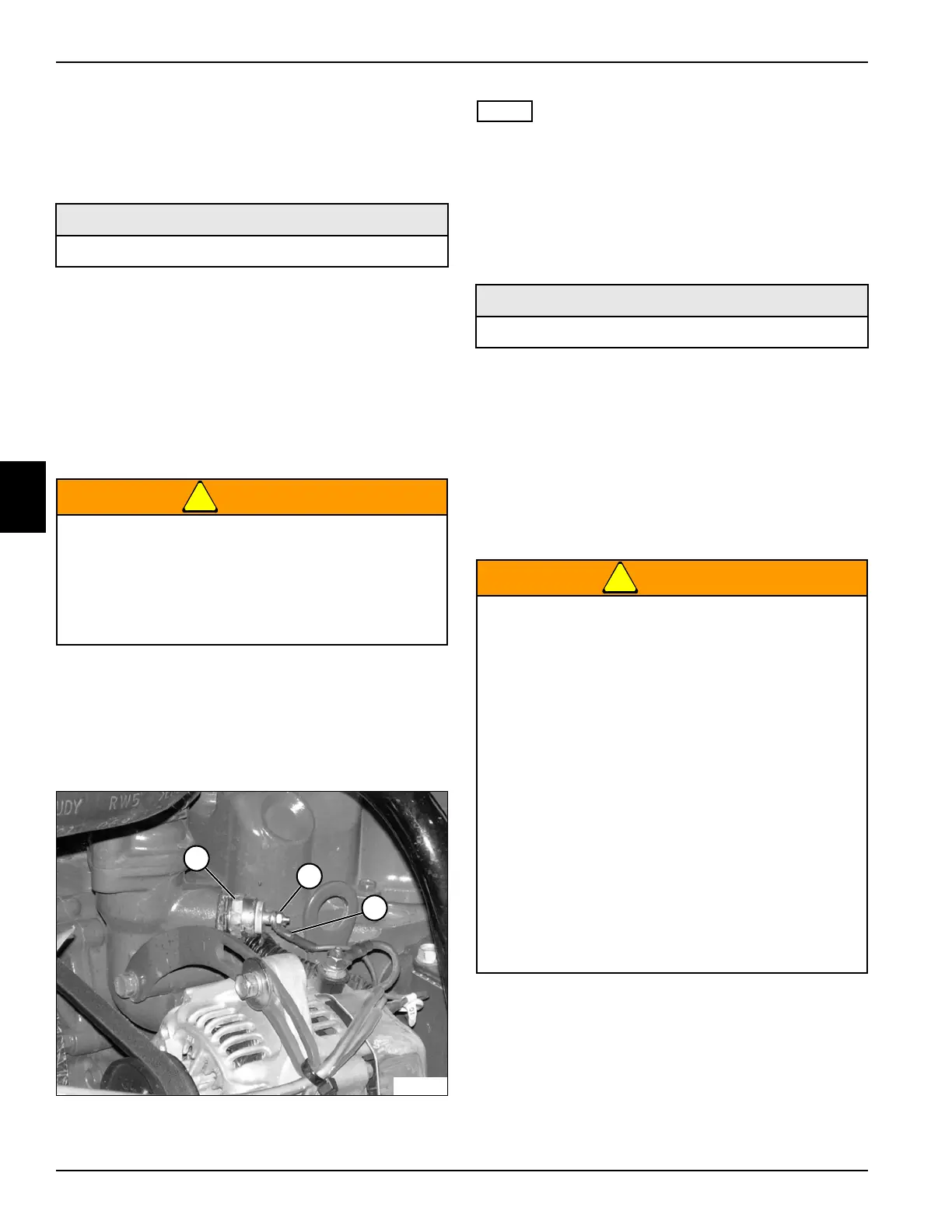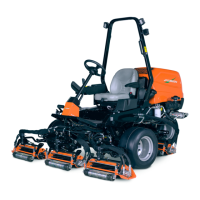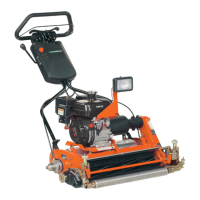4-104 4203780 First Edition
ELECTRICAL
4
4. Remove nut (2) and disconnect wire (3) from the
engine temperature sensor (1).
5. Remove engine temperature sensor (1).
Installation Notes
• Install the engine temperature sensor by reversing
the order of removal.
• Apply Teflon tape to the threads of the engine
temperature sensor before installing.
Engine Coolant Temp Switch
Removal and Installation
See Figure 4-108.
!
WARNING
1. Park the mower safely. (See “Park Mower Safely” on
page 1-6.)
2. Raise the hood.
3. Disconnect the negative (–) battery cable at the
battery.
Figure 4-108
NOTE
Label all wires before disconnecting to ensure correct
installation.
4. Remove nut (2) and disconnect wire (3) from the
engine coolant temp switch (1).
5. Remove engine coolant temp switch (1).
Installation Notes
• Install the engine coolant temp switch by reversing
the order of removal.
• Apply Teflon tape to the threads of the engine coolant
temp switch before installing.
Low Charge Pressure Switch
Removal and Installation
See Figure 4-109.
!
WARNING
1. Park the mower safely. (See “Park Mower Safely” on
page 1-6.)
2. Disconnect the negative (–) battery cable at the
battery.
Required Materials
Telfon
®
Tape
Engine coolant is hot and under pressure! Allow
the cooling system to cool completely before
performing service.
Rotate the filler cap 1/2 turn counterclockwise
and allow pressure to vent before removing filler
cap.
TN1914
2
3
1
Required Materials
Telfon
®
Tape
The hydraulic system is under pressure, and the
oil may be hot!
• Always allow the machine to cool completely
before performing service.
• Always relieve pressure in the hydraulic
system before performing service.
• Always use appropriate safety equipment and
clothing to protect exposed skin and eyes
from high-pressure oil.
• Tighten all connections to proper
specifications before applying pressure.
• Never use bare hands to check for leaks! Oil
under pressure can penetrate the skin and
can cause gangrene within a few hours if not
properly removed. Use a piece of cardboard
to check for leaks.
Failure to follow appropriate safety precautions
may result in death or serious injury.

